Presidents corner
Jon Garliepp
It’s
Thursday January 9th 2003, 5:l5 pm and it is my first meeting as
President of Chapter 62. I leave Cupertino early to pick up Jack
Cross to make sure we arrive early. Out of the garage, and now
it is raining; I make two calls to Jack to let him know that I am
stuck in traffic and rain. One and one half hours later at
6:45 pm while we arrive late, only a couple of members are already
there. Things start to happen though, as chairs and tables are
set up, and hot dogs start to cook. The meeting started l5
minutes late with 40 plus in attendance. Not a bad showing for a
stormy night.
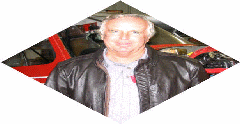 Steve
Switaj, our speaker, has many years of controller experience, and is
currently assigned to the Reid Hillview Tower. Steve spoke about
safety at the airport. By the way, visitors, two at a time, are
welcome to the Reid Hillview Tower. Please call 272-7014 ahead
to set up a time.
Steve
Switaj, our speaker, has many years of controller experience, and is
currently assigned to the Reid Hillview Tower. Steve spoke about
safety at the airport. By the way, visitors, two at a time, are
welcome to the Reid Hillview Tower. Please call 272-7014 ahead
to set up a time.
Alec Pipiani is working on our meeting programs, next month's program
will be Martin Hollmann. There are possible fly-outs later in
the year to Porterville and to the location that Jack Bowlus is
working on his airplane, near San Miguel. Please call Alec at
408- 923-8119 with any ideas or suggestions for fly-outs.
Here are some
updates on our members: Jack Bowlus, while not quite ready to
fly yet, has taxied and run it down the runway. He reports lots of
acceleration from the Ford V6. Ralph Reichhold has only l-l/2
hours left on his 40 hour fly off time. Boyd Blue's project has
just been signed off. Congratulations to all. It is nice to see
members moving ahead on their projects
We had two
guests at our January meeting, Arnold Lawton and Rich Pottorff and
one new member who found us through our website. Welcome Ray
Montague.
Annual dues are due, please update your information online and send a
check to Randy Wilde or John Wieler. Please be sure to keep your
national dues current. Remember, National EAA membership is required
to belong to a local chapter.
I am looking forward to a great year with many events. As always we
will need help from all of our members to make it happen.
See you at our
February 6, 2003 meeting. Jon

Special
Interest Groups
It isnt clear how many of our members are
actually actively building aircraft. When reviewing the members
database it lists many in progress kits. In an effort to provide help
and guidance to each other we created Special Interest Groups.
Special Interest Groups is an idea from a few years ago. Simply
stated, it was created to place members with similar interests
together to pursue those interests. The list lives on the Chapter 62
web site and is easy to access.
The SIG’s listed on the right were created as communication
networks in support of chapter members. By joining you can meet and
work with other members with common interests and similar goals, seek
assistance on your project, or seek knowledge by providing assistance
to a builder. SIG activities are open to all Chapter members. There
is more to it than signing up though. It requires your follow
through. This is a well thought out tool for the use of our
membership. Want to learn, need help? Join a SIG.
To
join a SIG, send an email to the
webmaster at eaa62.org,
or
phone the request to (408) 735-8014. To view the SIGs, log
into the Chapter 62 web site www.eaa62.org and click Builders
Corner.
Current
Groups (#)
| Antique/Classic SIG | (0) |
| Composites SIG | (0) |
| Designing Aircraft SIG | (0) |
| Fly-outs SIG | (16) |
| Panel Topics SIG | (0) |
| Power Topics SIG | (0) |
| Rotary Wing SIG | (0) |
| Sheet Metal SIG | (0) |
| Tube& Fabric SIG | (0) |
| Ultralight SIG | (0) |
| Wood &Glue SIG | (0) |
| Young Eagles SIG | (0) |

Editor’s Desk EdRosiak
Aloha
from Maui. My wife Linda and I are very lucky in that we are able to
take this trip every year at this time. Even though California
weather is not all that bad (I was raised in Milwaukee Wisconsin, so
I know bad weather), it is nice to escape in winter time, even from
California rain. One goal I have set while here is to talk to the
EAAers here on Maui to determine what they are building, and what
issues they face regarding flying and regulations particular to them.
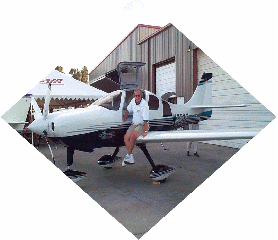
Pulling Maintenance
Speaking of winter, I use Shell 15/50 in the winter, and Shell 100
(50 weight) in the summer. I know that some aircraft owners believe
that you should stick with one weight, but I have a hard time with
that each time I start my engine at, or below, 40F. I cant help but
imagine those cold expanded metal parts rubbing together without
proper lubrication. As per the Aviation Consumer report I mentioned a
few issues ago, I think it is a good decision. As I have said in last
months IAs, my goal to make it to and past TBO.
One Thing Leads to Another
As I was changing oil and filter in December, I inspected everything
I could with the cowl off. Always a good practice I think. I also
tried (unsuccessfully) to determine why #4 CHT isnt registering
correctly on my JPI engine monitor. After disassembling the CHT/EGT
wiring bundles on the left side I found that #6 CHT lead was starting
to get a little burnt due to its proximity to the left turbo-charger.
I rerouted the bundle as far away from the exhaust as I could, and
made sure that the fire sleeve was safety wired all the way around
the bundle. As of this writing, I still havent found that pesky #4
CHT indication problem. I am pretty sure it is wiring related as I
had the instrument checked at the factory when I had an upgrade done.
Troubleshooting wiring can be a real art. I have decided to wait
until March/April when I can get professional help from the avionics
tech who helped wire the airplane in Oregon. I know that #4 cylinder
is okay because EGT is similar in temperature to all others; and,
there is no other problem associated with it such as excessive loss
of oil or rough running engine. I admit that I am close to being a
perfectionist when it comes to the airplane, but this problem will
have to wait a while. The annual inspection (for some reason I have
trouble remembering the proper term for experimental aircraft) is due
in March. At that time, when the interior is out and everything is
more accessible especially under the panel, I will revisit that #4
cylinder head temp issue. Time seems to fly as I am almost looking
another inspection in the face.
Getting Current
I
am coming along slowly on my instrument currency. Between scheduling
conflicts and wet grass field problems at 1C9 I havent made as much
progress as I would have liked. I dont believe in rubber stamping
anything either, especially something as important as instrument
currency; and neither does my instructor. Some pilots have asked what
is taking so long. I hadnt flown instruments in over five years. Then
you add a faster aircraft to the mix and it is simply more difficult.
Adding more speed to the approach speed I was used to means I have
adapt. Corrections on the approach need to be much faster farther
out, and much smaller closer in. Ill get it, but in my own timeframe
and at my comfort level. Gee, I guess that means I will need to
continue flying my ES--poor me..ed

Coast to Coast and Back David Young
David Young
has been a Chapter 62 Member for several years now. These excerpts
are from Dave’s cross country email log which he sent to
several of us. As you will read over the next number of segments,
Dave’s cross country trip covered west to east coast and back
again. Come along in his C182 to find out what kind preparation was
required and how it feels to fly without a schedule over a six week
period…..ed
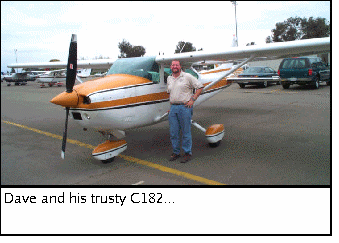
April 12 Cross Country Travels
As many of you
know, I am planning a trip across the United States in my airplane,
an orange and white Cessna 182 - tail number N7922C. If you are
getting the email, I think you are among the people who are
interested in this trip, and interested in semi regular updates on
the trip.
Last
August my airplane came out of its first annual with me as the owner.
At that time I had three cylinders replaced. From pretty much the
start I had always had some oil seepage, which would streak down the
pilot's side of the plane and onto the strut. As I learned long ago,
a tablespoon of oil, which is absolutely nothing as far as the engine
is concerned, can make a large mess, so I was not concerned with the
streaks. I check my oil religiously every preflight, and log the
amount, and what I add - if I need to add. At no time was I adding
oil, more than normal (which was a quart roughly every 10 to 12 hours
of flight for my plane.)
I consulted with
my mechanic and he was confident that the push rod seal on cylinder #
4 was most likely leaking. We could tell that was the cylinder the
oil was coming from. Most likely something wasn’t right after
the work done at annual. It was resealed in December, at no cost to
me - run up on the ground, with no issues found, and the issue was
closed.
After I flew
again the oil was back, but I was, not loosing any oil out of the
engine. I informed my mechanic, and we decided the next oil change
would be soon enough to take care of it. This was fine, as I was
getting the oil changed before I went cross-country, and I wanted
this fixed, so if I did get a "real" oil leak, I would
notice it.
In mid March the
oil was changed, and this time the push rod tube seal was replaced.
Again, the ground run up went fine with no leaks observed. I flew it
around and again the leak persisted - although it did not seem as bad
as it had previously.
I wasn’t
too concerned about it, but asked that they check it again and try to
figure it out. Having a seal go bad again was highly unlikely, and I
worried there might be something else going wrong. They decided to
take the exhaust off, and physically looked into the cylinder. They
found a hairline crack in cylinder # 4 - one of the three new
cylinders installed during annual inspection last year.
After pulling
the cylinder, a new one was ordered from the manufacturer at no
charge to me. I believed my mechanic when he told me the crack would
not have broken the cylinder if I had left, as I was not losing any
oil. On the flip side, I am very glad that it was found here, with a
mechanic I know, rather than in the middle of Iowa.
The moral of the
story is that even the little things should be fixed. I am very happy
that I kept on the mechanics about the oil, rather than simply
writing it off as a minor issue; and I am happy that they took the
concerns seriously and really looked into the issue, rather than
simply trying to convince me it was a non-issue.
April 24 – What Can I Say?
I
had lunch in an exotic location today - Capitola California. The
plane is still being worked on. I flew it today to check some of the
work, and it still might have minor issues - the mechanics are going
to take another look at it tomorrow. At the moment I am thinking
Sunday will be the launch date - but who knows!
Details:
When we last
left this saga the piston had been replaced. When the mechanics did
the run up on Monday they saw the same cylinder (#4) (yes- I mean
cylinder) was still leaking, and now cylinder #3 on the other side
was also leaking.
The next course
of action was to pull all the push rod gaskets and washers and
replace them, as this seemed to be where the oil was coming from.
This involved resealing all the push rod seals, letting them dry,
hooking everything back up and test running it. They ran it this
afternoon with no issues.
I test flew it,
never leaving the airport traffic area, and when I was done I saw the
same miniscule traces of oil I had always seen. Tomorrow they will
pull the cowling - again -to see if it is actually the engine, or if
it was simply residual oil from the work being done. A teaspoon of
oil can make a real mess, so if the engine all looks clean, I will be
happy.
I will fly
around here for a few more hours to make sure life is good, and life
continues to be oil free - but will not push the situation. We will
see.
April 28 –Viva Las Vegas
Once again my
plans have been very dynamic. I believe in my last note I stated that
I was leaving on Sunday... well... that changed and I decided to
leave today (Saturday.) I am typing to you from the Texas Station
Hotel in Las Vegas. "How did that happen? I thought you were
going to Laughlin Nevada?" you may be asking yourself. Well keep
reading.
To back up a
couple of days, my plane was fixed and running on Wed. I flew it for
about 40 minutes, and what I thought was a leak, was not. My mechanic
pulled the cowling off and everything was bone dry. The oil I saw on
the outside was most likely residual.
I scheduled to
fly with my instructor Friday afternoon. I packed the plane as if I
was leaving on the trip, and we flew for almost three hours. The
weather on Friday in the bay area was not great. It was cloudy, and
ugly, the base of the clouds were around 3,000 ft., and the tops were
at about 6,000. This was perfect for practicing instrument work, and
we flew over to Stockton airport.
When we
returned, the engine was still bone dry - so I was very confident the
engine was repaired. When I checked the oil this morning, the level
hadn’t changed.
I checked the
weather last night, and it was forecast to be about the same as it
had been Friday, so I thought I could take off Saturday without any
issues. Very little had changed, when I woke up this morning, so I
finished packing, and loaded up the airplane.
Once ready, I
called the Flight Service Station (FSS) to get yet another weather
report, and to file an Instrument Flight Rules (IFR) flight plan. As
I filed to Laughlin the briefer started talking about a riot, which
broke out in the city at 2am Saturday morning. He was wondering if I
had heard about it. I hadn't.
After pre-flight
I called ground control to taxi out to the runaway. When I spoke to
ground to pick up my clearance, they questioned going to Laughlin
because of the biker convention going on (which I had no idea about.)
After about 1/4 of the way there I decide to listen to the news on
the ADF. Sure enough, the top story: The 8,000 bikers in Laughlin,
and the riots that happened the previous night, which shut the city
down. They had to put the city in lock down over night.
I decided that
it was not the place for me. No problem. I had already pulled out all
the charts for North Las Vegas, since I had filed it as an alternate,
so I decided to change my routing to go to North Las Vegas. Air
Traffic Control amended my clearance, and I arrived about three hours
after takeoff. The local storms created quite a nice tail wind to
push me along.
The bottom line
is, always be prepared to change the plan - even if it is not for
weather issues. Tomorrow I should be heading for Santa Fe New
Mexico.... but who knows.
P.S. - The
routing - for those following on a map - is not a direct line for
small aircraft, because of the Sierras and some military areas. I
basically had to go south east for a while, and then turn east to
north east to go to Las Vegas. Route of flight was, San Jose to
Bakersfield, to Palmdale, to Dagget, and then direct to Los Vegas.
April 28 –The Pilot’s List
First of all -
always file pilot reports! They are the most helpful things in the
world, especially on days like today. I filed two during my trip
here.
The weather this
morning had three Airmets- one for Mountain Obscuration (which is
almost always out, so I kind of ignore that one), one for icing above
about 7,000 feet in clouds, and one for moderate turbulence below
18,000.
I was mostly
concerned about the turbulence between Bakersfield and Palmdale, and
then into the high dessert which is basically mountain flying. In
addition, surface winds at Palmdale and Fox field were forecast to be
25 knots gusting to 30 knots. Winds aloft were actually about the
same - 20 to 30 knots at 12,000. I was planned for, and filed 11,000.
The PIREPs all
said smooth. Three different planes within about an hour had gone
through the pass with no issues. They all reported tops around 6,500
- although there were a couple of reports of ice. I decided to take
my time loading the plane, hoping it would warm up a little, and I
could get more info on the weather.
After loading I called flight service,
and there was only one other PIREP, which again said, smooth. I
decided to play it safe, and I had the Bakersfield approach charts
out - if the PIREPs changed, or ATC knew more than I did, I would
simply spend the night in Bakersfield - no big deal.
I took off around noon and climbed out. Since the weather was low,
Bay Approach was not very busy and did not have to vector me around
too much, or slow down my climb. I was still a little nervous about
ice, but I had the San Jose approach chart in front of me so I could
come right back if I didn't like what was going on. I got into IMC
around 4,000 and popped out around 7,000 - about six whole minutes of
actual. No ice or turbulence. I went up to 11K and had a very smooth
flight until I had to start descending into Las Vegas. I was over a
solid layer of clouds until I got into the Palmdale / Edwards dessert
area. I was basically clear after that point. The clouds almost came
up to meet me in the central valley - but not quite. I estimated tops
at Bakersfield around 10,500.
Even the Las Vegas turbulence, which I expected since it was late in
the day, was not too bad. I had a couple of bumps, but then it would
smooth out. The bigger issue was the landing. The tower knew I was
from out of town, and was a huge help. The winds were 15 knots
gusting to 20, and were at about 45 degrees to any of the N. Las
Vegas runways. The tower offered my either 12 or 25 - the winds were
180. I was set up for downwind on 12 so continued. The controller
then called the turbulence spots for me on final - a shopping mall
and eddies off the hangars. He was great. I kept extra power; had
only 20 degrees of flaps, and landed, almost full right rudder - but
I did land and I kept it straight on the runway. So here I am -
unexpectedly in Las Vegas - tired and happy.
Next month
more cross country time with weather decisions to boot………..ed

General Meeting Minutes Ted Robinson
President
John Garliepp called the meeting to order at 7:40. The first item
discussed was that of members talking during the meeting and
program.
Jon urged
any who have the desire to talk at these times to take it outside.
Jon also urged the members to make our guests feel at home and
explain how our meetings work.
The
minutes were approved as appeared in The Intrepid.
Treasurer
Randy Wilde read the treasurer’s report.
Alec
Piplani spoke on the upcoming programs. Chapter 62 member and
aircraft design guru Martin Hollmann will be our program for
February. Anyone who has an idea for a program, please contact Alec.
Carlos
Treves was absent, so no Young Eagles update.
John Wieler
was absent, so no membership update.
Jack Bowlus
spoke on his project, which is a Piper Pacer converted to a Ford V6;
the basic aircraft is assembled and he has done some taxi tests.
The FAA has
signed off Boyd Blue’s GlaStar
Ralph
Reichhold’s Cavalier needs 1.5 more hours to complete the 40
hour restriction.
Kevin-Neil.
Klop has resigned as director. We need someone to fill in for him.
We gave a
big hand to Alec Piplani for his effort on the Christmas party.
The meeting
was adjourned at 8:57. The raffle followed the coffee and donuts.
The program
was a presentation by Steve Switaj from the RHV tower.
Officers and
board present were: Jon Garliepp, Alec Piplani, Ted Robinson, Randy
Wilde, Jack Bowlus, Wolfgang Polak, Ralph Reichhold and Rolland
LaPelle.
Respectfully
submitted,
Ted Robinson,
Chapter secretary
President Jon Garliepp called the meeting to order at
7:30.

Board Meeting Minutes Ted Robinson
It was
moved and seconded to accept the secretary’s report, with
minor changes.
Randy Wilde
handed out the treasurer’s report.
Alec
Piplani spoke on upcoming programs and the raffle.
January’s
raffle netted $21.00.
February’s
program will be Martin Hollman;
Tentative
program for March will be John Palmer, a master
machinist/mechanic who has built three Wright Bros engines.
Carlo
Treves gave a Young Eagles update. We have seven events scheduled
for 2003.
John Weiler
gave a membership update. All who have not updated info on the web
and sent in their dues are urged to do so now.
Robin
Gould was absent, but Alec Piplani spoke of at least one future
fly-out. It will be Saturday, April 26th to Porterville.
Ralph
Reichhold said we have no open houses scheduled.
Wolfgang
informed us that tech counselors and flight advisors can now be
found on the chapter website.
Avion
Research’s CEO Trevor Burward-Hoy has offered to have an open
house at his facility in Sunnyvale on some future Saturday. He would
be happy to demonstrate to ten or fifteen members the design,
layout, CNC machining, powder coating, silk-screening, etc. of an
instrument panel. We will have more info at February’s
meeting.
The meeting was
adjourned at 8:40. Officers, board and members present were: Jon
Garliepp, Alec Piplani, Randy Wilde, Ted Robinson, Ralph Reichhold,
Carlo Treves, Wolfgang Polak, Larry Reed, Rolland LaPelle and John
Weiler.
Respectfully
submitted,
Ted Robinson,
Chapter
Secretary

WAP Your Way Around Greg Pisanich
So you say that you got one of those phones that take photos for
Christmas? And you’ve been having a great time sending photos
of aircraft parts as hints to your spouse?
Did you know that you could use that phone (or any other phone that
is web-enabled) as an aid in flying? Here’s how.
WAP stands for Web Application Protocol. It’s a format that web
designers can write to that will allow your web-enabled portable
phone (that’s the button that always warns you that you are
about to incur additional charges) to read data in that can be
displayed on your phone screen. I have read reports that boast that
WAP may replace Wireless PDAs (but don’t bet on it, because
many of the new PDAs are coming out with phones).
So here’s some interesting notes on WAP enabled phones:
http://www.my-cast.com/pilot/
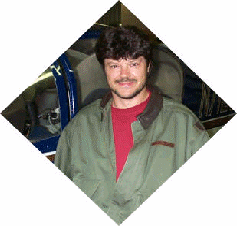
This was taken from their Site: “Pilot My-Cast can provide
personalized weather information to the general aviation pilot. You
can view METARs and TAFs along your route. You can pan around a METAR
and page through flight conditions, ceiling, visibility, wind,
cloud cover, altimeter, temperature and dew point information.
You can also view animated Doppler Radar centered on your airport.
Best thing is that it’s free, if you have the right phone. It’s
available for NEXTEL and ATT Wireless phones.
http://www.cupittaviation.com/
This site offers basic and enhanced weather for both WAP enabled and
also PDAs. Basic is free, enhanced costs a few bucks more. It’s
worth a look and may cover more handsets that Mycast described above.

http://wapmet.speedfreak.com
WAPMet is a free METAR decoding service for WAP enabled devices. You
can use your mobile phone to enter the 4 digit ICAO code or part of
the name, for any airport or reporting station world-wide and receive
the latest METAR weather report. WAPMet doesn't just give you the
METAR report; it also gives you a "human readable" version
saving you the need to decode the METAR yourself. This site is also
free. Visit it to learn how to access this data.
http://www.sunplan.com/
This site also offers free WAP weather, but you may only be able to
use it if you are flying to the UK! It might be fun to visit
So which phone works best? Suggestions are for the Motorola T720.
Which service is best? Although I currently have Sprint, and the
My-Cast currently only works with Nextel and AT&T, the folks at
Verizon are working to provide this service. Some pilots report that
Verizon has better coverage than other services. I would be
interested in any feedback about service from other pilots.
Next month,
we’ll revisit the wireless PDA aviation services available.

FAA NPRM: LAX VFR Corridor
The FAA has
proposed an NPRM to "to revise and codify Special Federal
Aviation Regulation (SFAR) No. 51–1, Special Flight Rules in
the Vicinity of the Los Angeles International Airport."
The proposed
action plans to change the northern boundary of the Los Angeles
Special Flight Rules Area (SFRA), established by SFAR No. 51–1,
to align the area with the Los Angeles Class B airspace area
revisions adopted in 1997. Also, this action would revise the
description of the SFRA airspace to make the requirement to operate
at fixed altitudes clearer. The FAA is proposing this action to
reduce the potential for climb/descent conflicts, to ensure
compatibility with current traffic flows, and to increase overall
system efficiency and safety.
The FAA is asking
for comments to the NPRM by February 14, 2003.
The FAA issued
SFAR No. 51–1 in February, 1988, to provide Visual Flight Rule
(VFR) pilots with a safe and direct north/south route through the Los
Angeles (LAX) Terminal Control Area (TCA), now known as the Los
Angeles Class B area (53 FR 3812, February 9, 1988). Specifically,
SFAR No. 51–1 allows certain aircraft operating under VFR to
fly through the Special Flight Rules Area (SFRA) without contacting
air traffic control personnel provided that specific conditions
aremet. The conditions include equipment, use of lights, maximum
indicated airspeed and operations at fixed altitudes.
FMI:
http://dmses.dot.gov/docimages/p74/210240.pdf

Davis’ PROPOSES DRASTIC AVIATION FUNDING CUTS
California
Governor Gray Davis has proposed drastic budget cuts that include
transferring nearly $5.2 million from the state's aeronautics account
to the general fund. "No way," said Anne Esposito, AOPA
vice president of airports. The aeronautics account funds nearly all
of the state's airport improvement projects, which, under the
proposed budget cut, would be virtually eliminated. "If the
proposed cuts take effect, you will see no improvements to general
aviation airports in California next year," said Esposito. The
majority of the funds in the aeronautics account are derived from
state sales taxes on aircraft fuel purchases. "Pilots deposit
money into that account every time they buy fuel," said
Esposito. "Shouldn't that money be used to fund aviation
development?"
California AOPA
members should contact their state representatives. Let them know
that the proposed budget cut would negatively affect the airport in
your community.
Okay
folks, here is where you can make a difference. Send Gray Davis your
(polite) unemotional response to his tactic of stealing from us. It’s
the same old story time after time. Government is not held
accountable and they continue to waste taxpayer’s money. Tell
him NO!!

February 6th General Meeting Program
Martin Hollmann, President of Aircraft Designs Inc., will be our
guest speaker for the February meeting.
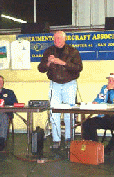
Every
year Martin brings a very interesting program to share. This year it
will cover a variety of subjects. Martin will be talking about
"Rockets, Jets, and
Homebuilt Aircraft."
Bring your
questions and get them answered by an expert.
For more
information:
http://www.aircraftdesigns.com/hollmann.html

>Upcoming Events
Frazier
Lake Antique Display is the first Saturday of every month
from 10AM-4PM at 1C9, Frazier Lake Airport. Come to visit, or display
your antique aircraft
FEBRUARY
6th Chapter
62 General Meeting
9th
AOPA Air Safety Foundation Pinch Hitter Sacramento, CA.
www.aopa.org/asf
13th Chapter
Board Meeting RHV 7:30
March
29th Riverside,
CA Airshow 2003, Riverside Municipal Airport KRAL Contact
Information: Thomas L. Miller 909-682-1771
Future Events
ANNUAL
SUN 'N FUN RACE SET FOR APRIL http://www.sun-n-fun.org
Aircraft Spruce
will host the twenty-first running of the Sun 100/Sun 60 Air Races as
part of the annual Sun 'n Fun EAA Fly-in in Lakeland, Florida.
The homebuilt
race is scheduled for April 3 with the certified race the following
day. Each race is restricted to 75 aircraft and there is a $25 entry
fee. To obtain an entry form, contact Jerry Aguilar at Aircraft
Spruce, 800/824-1930
Golden
West Fly-in —June 20-22
Oshkosh —July
29-Aug 4.

EAA
Chapter 62 meetings are open to the public. EAA member’s
guests, and visitors are always welcome. Chapter
62 usually meets on the 1st Thursday of each month (except
August), 7:30 PM. at Vern Miller Aviation, 2635 Cunningham
Avenue, Reid Hillview Airport (main entrance, on Cunningham Avenue
right side of the road).
Hangar
Hour
 Come
meet your fellow EAAer’s, make some new friends, have some
food, and enjoy the camaraderie. Food will be sold from 6:30: to 7:25
during which time you can hangar talk or view various ‘How To’
videos. The meeting will start promptly at 7:30 PM, with 10 minutes
of announcements, 10 minutes of “open mike,” and 10
minutes for the coffee break. The program starts promptly at 8:00PM.
Come
meet your fellow EAAer’s, make some new friends, have some
food, and enjoy the camaraderie. Food will be sold from 6:30: to 7:25
during which time you can hangar talk or view various ‘How To’
videos. The meeting will start promptly at 7:30 PM, with 10 minutes
of announcements, 10 minutes of “open mike,” and 10
minutes for the coffee break. The program starts promptly at 8:00PM.
To
contact Chapter 62 please see the web site at
www.eaa62.org.
 Steve
Switaj, our speaker, has many years of controller experience, and is
currently assigned to the Reid Hillview Tower. Steve spoke about
safety at the airport. By the way, visitors, two at a time, are
welcome to the Reid Hillview Tower. Please call 272-7014 ahead
to set up a time.
Steve
Switaj, our speaker, has many years of controller experience, and is
currently assigned to the Reid Hillview Tower. Steve spoke about
safety at the airport. By the way, visitors, two at a time, are
welcome to the Reid Hillview Tower. Please call 272-7014 ahead
to set up a time.













 Come
meet your fellow EAAer’s, make some new friends, have some
food, and enjoy the camaraderie. Food will be sold from 6:30: to 7:25
during which time you can hangar talk or view various ‘How To’
videos. The meeting will start promptly at 7:30 PM, with 10 minutes
of announcements, 10 minutes of “open mike,” and 10
minutes for the coffee break. The program starts promptly at 8:00PM.
Come
meet your fellow EAAer’s, make some new friends, have some
food, and enjoy the camaraderie. Food will be sold from 6:30: to 7:25
during which time you can hangar talk or view various ‘How To’
videos. The meeting will start promptly at 7:30 PM, with 10 minutes
of announcements, 10 minutes of “open mike,” and 10
minutes for the coffee break. The program starts promptly at 8:00PM.